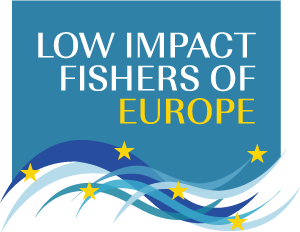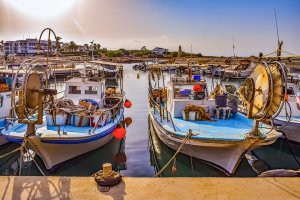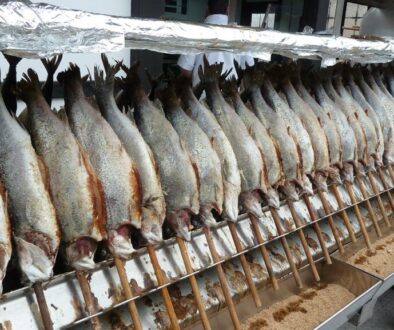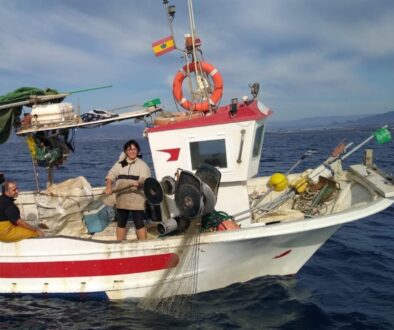Sledge Hammer and Nut: LIFE finds the European Commission’s ambitious proposal to amend the Fisheries Control Regulation excessively prescriptive and ill-suited to crack the nutty problems of small-scale fisheries catch reporting, monitoring and enforcement.
Brussels, 19th June 2018
Brian O’Riordan
LIFE would like to see more of a bottom up approach to implementing the new Control Regulation, with more carrot and less stick applied to the task of bringing small scale fishing operations into the regulatory fold. Rightly the proposal’s ambitions aim high. Wrongly the onus is placed on the sector to comply without providing the necessary support measures and guidance to assist the transition.
Small scale fisheries, the life blood of Europe’s forgotten fleet, have for long been outliers in the European Common Fisheries Policy (CFP). Small scale fishing (SSF) activities (under 12 metre vessels using non-towed gears), comprising 74% of the active fishing fleet in 2015, are currently not obliged to report their catches or to give their at sea positions. This is to change, and change dramatically under the reformed Control Regulation.
DG Mare have recently published a proposal to amend the Control Regulation. In its new form it will make significant demands on small vessel operators, with implications for how they carry out their operations. Noteworthy are the requirements to maintain an electronic logbook, and for the weighing of the catch, per species, at the time of landing. The landing of unsorted species is only to be allowed if strict conditions are met, including weighing by systems operated or controlled by Member State authorities. This will have implications for many direct sale schemes, where fish is sold from small vessels whilst still at sea, with catches dispatched to buyers on landing. Small operators also need to take note of strict new provisions on infringements and sanctions, including a new penalty points system.
Provisions in the Commission proposal specify that “all vessels including those below 12 metres’ length must have a tracking system”, and that “all fishing vessels below 12 m must report their catches electronically”.
Also of note in the proposal is the removal of the exemption from reporting in logbooks of catches of less than 50 kg. According to DG Mare, this exemption “could leave up to 350,000 t of fish, corresponding to 6% of currently reported catches by EU fishing vessels, unaccounted for”.
LIFE welcomes the recognition in the proposal that “small scale fisheries play an important role in the Union, from a biological, economic and social perspective”. LIFE also agrees that “it is important to control that fishing activities and fishing efforts of smaller vessels are in compliance with the rules of the common fisheries policy.”
However, LIFE urges that the requirements for electronic reporting be adapted to the realities of small-scale fishing operations. Conditions aboard smaller vessels, especially in adverse sea and weather conditions, are in most cases not favourable to multi-tasking and manipulations on small devices that require both dexterity and precision.
The new proposal highlights that “Member States should be able to track all fishing vessels, including fishing vessels which are less than 12 metres’ length,” and that “for vessels 12 metres’ length it is now possible to use mobile devices which are less expensive and easy to use.”
As far as reporting is concerned, the proposal also notes that: “Any additional burden for small operators (small-scale fishermen) will be avoided by the introduction of easy and cost-effective reporting systems for fishery data, taking advantage of affordable and widely available mobile phones technologies.”
So far so good.
However, one major cause for concern is that a study commissioned by DG Mare under the auspices of EASME “to examine approaches developed for electronic monitoring of Small-Scale Fleets (SSFs) and to propose good practice in this area” has been dropped. The findings of this study should have informed the refinement of the new Fisheries Control Regulation, provided an inventory of different affordable and widely available mobile phones technologies, and applied tailored technological solutions to the reporting problems experienced in the SSF. In the absence of any official explanation, one can only speculate as to why this study has been dropped, and as to whether or not it has to do with the undue haste with which this new regulation is being forced through.
The proposal is doomed to failure on this aspect unless it adopts a more bottom up approach to electronic log books for SSF, including at sea trials, training courses, and financial support to SSF operators to install, maintain and use appropriate equipment.
It is also worth noting that whilst the intentions of the Commission may be well meaning, the reality is that at the time of writing, we are a long way from being able to access the aforementioned “easy and cost-effective reporting systems for fishery data, taking advantage of affordable and widely available mobile phones technologies.” It is also apparent that at present, there does not appear to be an at sea vessel based system that is able to ‘talk’ to the land based administrative servers.
The top down approach is highlighted in Article 15.2 which states that: Masters of Union catching vessels of less than 12 metres’ length overall shall submit by electronic means the information referred to in Article 14, to the competent authority of their flag Member State after the last fishing operation has been completed and before entering port.
SSF will also have to comply with the requirement for all categories of vessels to include in the logbook information on lost gears, including the type of lost gear; the date and time when the gear was lost; the position where the gear was lost; and the measures undertaken to retrieve the gear. Under 12 metre vessels will also have to carry on board the necessary equipment for the retrieval of lost gear.
For larger vessels within the under 12 metres sector, with a deck, with an electricity supply, and with a well sheltered wheelhouse away from gear handling areas, this may be relatively easy to comply with. However, most commonly, small-scale vessels in Europe are 5 to 7 metres in length and weigh around 3GT. These vessels may not have a deck, are unlikely to have an electricity supply, and have little to offer by way of a sheltered space away from the gear handling area. Operating a mobile device, however affordable or widely available, on a moving platform under such conditions with a wet and slippery gloved hand, with the other hand on the tiller, will present quite a challenge to say the least.
Such operations are most easily and effectively carried out once ashore, and probably with best effect at the point and/or time of sale. It is clearly impractical for all vessels to carry weighing scales, even if their operation was possible on a small boat, so this requirement relies on a guesstimate of the weight of the various species aboard prior to landing. LIFE therefore questions what value ‘at sea’ reporting could possibly bring to the regulator – and what kind of hardware is proposed to enable SSF operators to log their catch data.
The Regulation refers to all small scale vessels. This sector amounts to almost 62,000 vessels across Europe, from the smallest of Greek islands to the northernmost archipelagos and notwithstanding the challenges noted above, where is the infrastructure going to come from, and who is going to pay for it to handle the sheer volume of data relating to individual vessel movements, gear loss, catch reporting and subsequent landings declarations?
And what happens if it breaks? Past experience illustrates that vessel based technology is less reliable than its terrestrial counterparts. In the event of technical failures, where does this leave the fisherman? Will he still be allowed to leave harbour or cove and with respect to the outermost regions, what are the practical aspects of getting equipment repaired in a short time?
It does not take a sledge hammer to crack a nut. LIFE therefore urges that, informed by some considerable SSF experience to date with mobile technologies, more thought is given into tailoring reporting measures to fit the realities of SSF operations. Over the last few years mobile technologies have evolved in leaps and bounds, as has SSF ingenuity in using and applying APPs and SMS to their needs, be it for safety at sea, accessing web-based data, running their businesses, or communicating with markets.
Mobile technologies, EMS, APPs and SMS linked to web-based systems offer a plethora of opportunities to improve reporting, ensuring compliance with regulatory requirements as well as to meet the needs of fishing operations for real time information, sending distress calls, informing markets, and logging data for private use.
However, in implementing an amended Fisheries Control Regulation, some realistic targets and deadlines need to be set, along with the adoption of a flexible bottom up approach, to ensure that the entire gamut of operations carried out by SSF are able to fulfil the objectives of good fisheries management by providing the necessary data, in a timely fashion, in the format required. In this regard, however effective and easy to use new mobile technologies may be, unless there is an effective application programming interface (API) between the mobile technology and the server logging the catch data, together with the required infrastructure to actually handle the data flows in the first place then the Regulation is going to be more of a road block than a route map for effective and efficient fisheries management in Europe.
Last but not least, there are to be stricter proceedings in the event of an infringement, with the setting of standardized minimum levels of fines. In parallel, a new points system is to be implemented, designed to ensure effective deterrence against the most harmful behaviours, which may lead to the suspension or withdrawal of fishing licences or of the right to command a vessel.
What constitutes a serious infringement will depend on the gravity of the infringement in question and is to be determined by the competent authority of the Member State concerned. 17 activities are listed that shall constitute serous infringements. It is left up to Member States authorities to decide on whether a further 9 activities, depending on their gravity, are to be dealt with as serious infringements, including “not fulfilling of obligations to accurately record and report data relating to fishing activities, including data to be transmitted by vessel monitoring system and prior notices”.
LIFE is concerned that, due to the difficulties for small vessels to comply with new reporting requirements, the smallest vessel operations may be unfairly criminalised. We would like to see more carrot in the form of grants and training courses and less stick in the form of sanctions and criminal proceedings to bring small scale fishing operations into the regulatory CFP fold.




